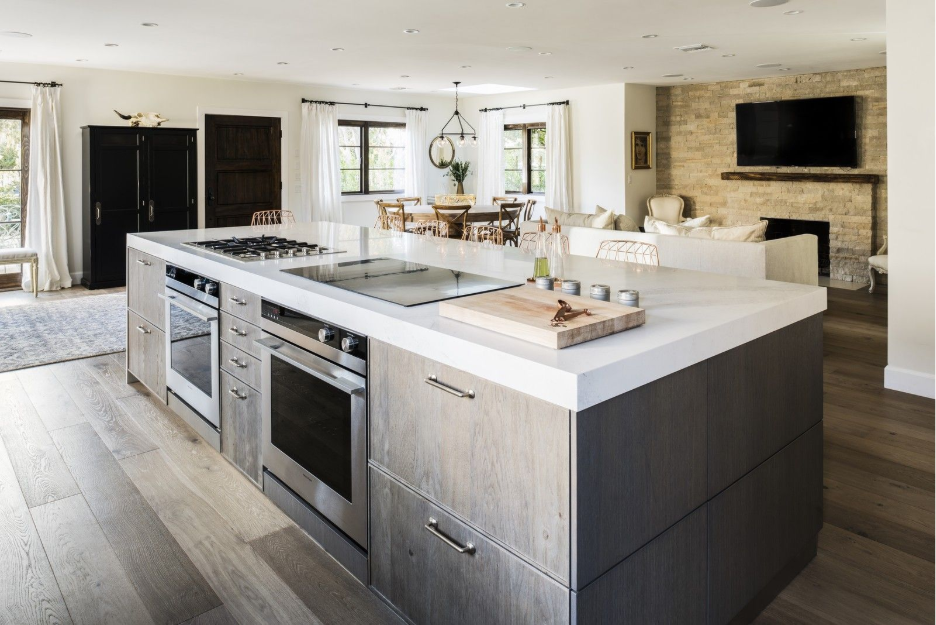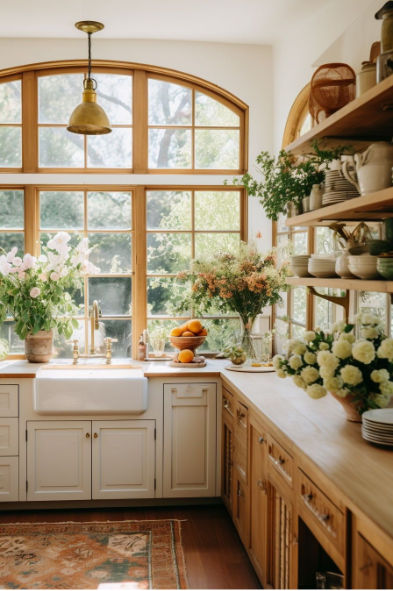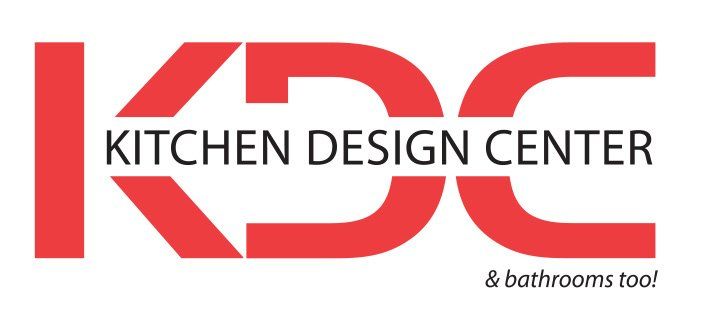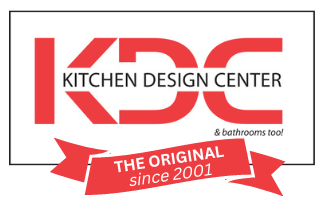Top Kitchen Design Trends for 2026: Style, Innovation & the Psychology of Better Living
The kitchen has always been the heart of the home—but in 2026, it’s evolving into something even deeper: a space where design, technology, and well-being intersect. The best kitchens now do more than serve meals—they support daily rituals, creativity, and emotional wellness.
At Kitchen Design Center (KDC), we believe trends should enhance how people live, not just how their homes look. Our approach blends design intelligence, behavioral psychology, and timeless style to create kitchens that are beautiful, functional, and built to last.
Here are the top kitchen design trends for 2026—and why they work both aesthetically and psychologically.
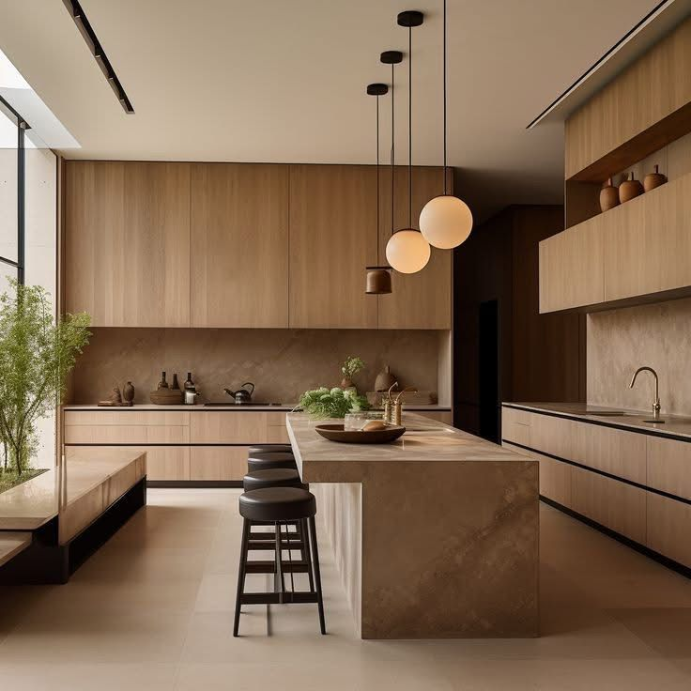
1. Multi-Purpose Kitchen Hubs & Micro-Zoning
The Trend:
Kitchens are transforming into multi-use hubs where zones overlap—cooking, prepping, dining, and even working flow together seamlessly. Design emphasis is on flexibility rather than fixed boundaries.
Why It Works:
Defined but adaptable zones reduce clutter and tension. Movement feels intuitive and stress decreases when each activity has its space.
KDC Tip:
- Use multi-level counters or islands to separate functions while staying connected.
- Integrate outlets and smart charging in each zone for everyday convenience.
- Map out how you use the kitchen daily before finalizing the layout.
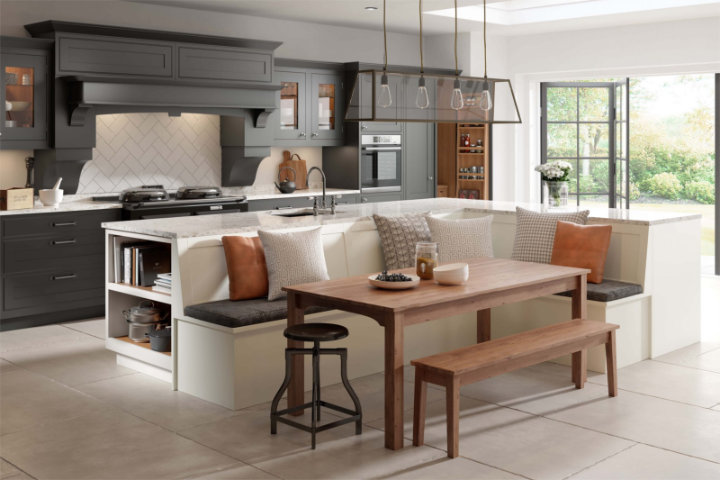
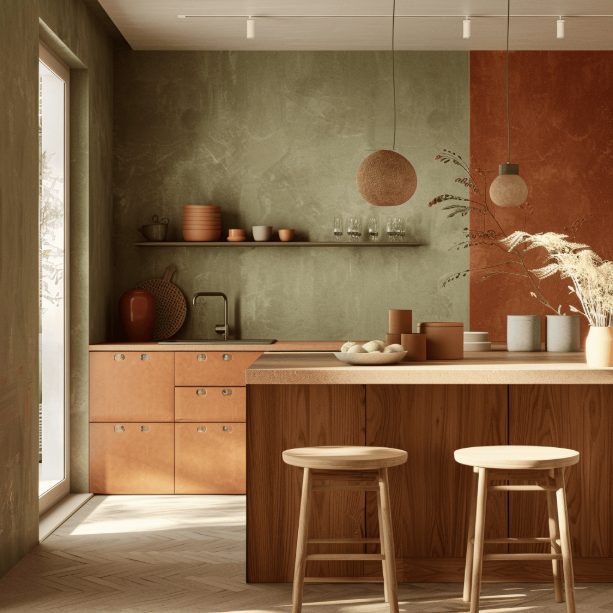
2. Earthy Neutrals, Tactile Finishes & Quiet Luxury
The Trend:
Designers are trading glossy perfection for organic warmth—think clay tones, soft greens, honeyed woods, and matte stone textures. This “quiet luxury” aesthetic feels both refined and inviting.
Why It Works:
Natural textures reduce visual fatigue and promote calm. Biophilic elements—materials and colors inspired by nature—create psychological comfort and a sense of groundedness.
KDC Tip:
- Mix stone and wood for layered depth.
- Add one statement finish—like fluted wood or plaster—to balance minimalism with warmth.
- Let patina and texture tell a story rather than chasing flawless surfaces.
3. Smart Tech That Simplifies Life
The Trend:
Smart kitchens are becoming adaptive and anticipatory. Appliances can suggest recipes based on what’s in your fridge, and lighting adjusts to match your circadian rhythm.
Why It Works:
Tech that quietly supports daily routines saves mental energy. When repetitive tasks are automated, your kitchen works with you, not against you.
KDC Tip:
- Start with essentials like smart lighting or a touchless faucet before adding AI appliances.
- Choose technology that integrates across devices to reduce app clutter.
- Simplicity is the true mark of innovation.
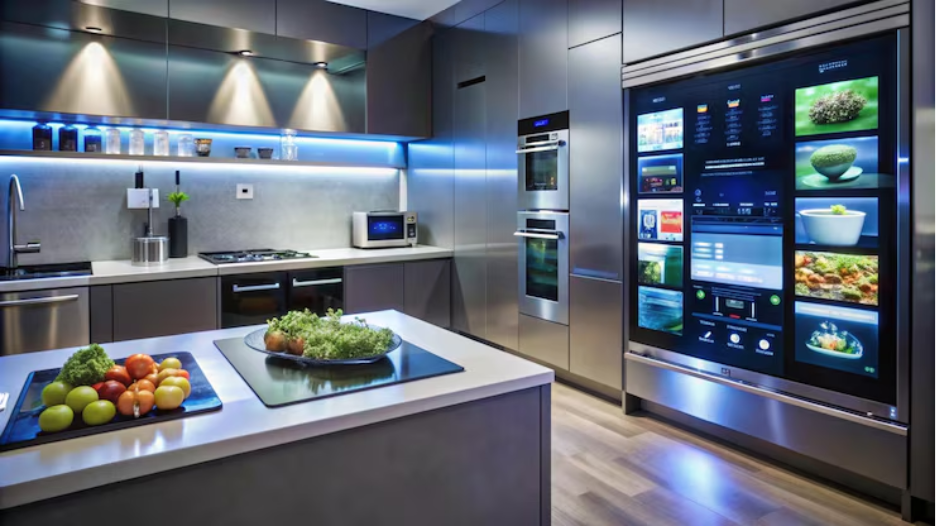

4. Seamless Storage & “Invisible Organization”
The Trend:
Hidden storage continues to evolve, with concealed pantries, appliance garages, and integrated drawers that create a minimalist, clutter-free look.
Why It Works:
A clean environment leads to a calm mind. Visual order reduces stress and makes even smaller kitchens feel spacious.
KDC Tip:
- Designate storage zones early in the process.
- Combine closed cabinets with a few open displays to balance beauty and function.
- Consider vertical pull-outs or pocket doors to maximize every inch.
5. Flexible Dining & Social Spaces
The Trend:
Dining areas now serve multiple purposes—morning coffee spot, evening wine bar, remote workspace—all within one adaptive design.
Why It Works:
Flexibility creates comfort. When a space easily transforms, it naturally gets used more often and fits a wider range of lifestyles.
KDC Tip:
- Use dimmable lighting to transition between work and relaxation.
- Pair comfortable seating with islands or peninsulas.
- Choose furniture and layouts that invite both focus and togetherness.


6. Sustainable & Crafted Design Choices
The Trend:
Sustainability in 2026 emphasizes longevity and craftsmanship—using recycled, local, and durable materials that stand the test of time.
Why It Works:
When your space aligns with your values, it feels better to live in. Choosing quality materials also reduces maintenance and replacement stress.
KDC Tip:
- Opt for low-VOC paints, energy-efficient lighting, and responsibly sourced wood.
- Invest in durability first; trends can be layered in later.
- Support regional makers and materials whenever possible.
7. Statement Lighting as Sculptural Art
The Trend:
Lighting is no longer just functional—it’s decorative architecture. Expect oversized pendants, asymmetrical fixtures, and soft LED accents that highlight textures.
Why It Works:
Lighting shapes mood and directs focus. When layered correctly, it turns an ordinary kitchen into a warm, welcoming experience.
KDC Tip:
Plan for three layers: task, ambient, and accent lighting.
- Use dimmers to create versatility from morning prep to evening entertaining.
- Highlight texture—tile, stone, or wood grain—with gentle side lighting.

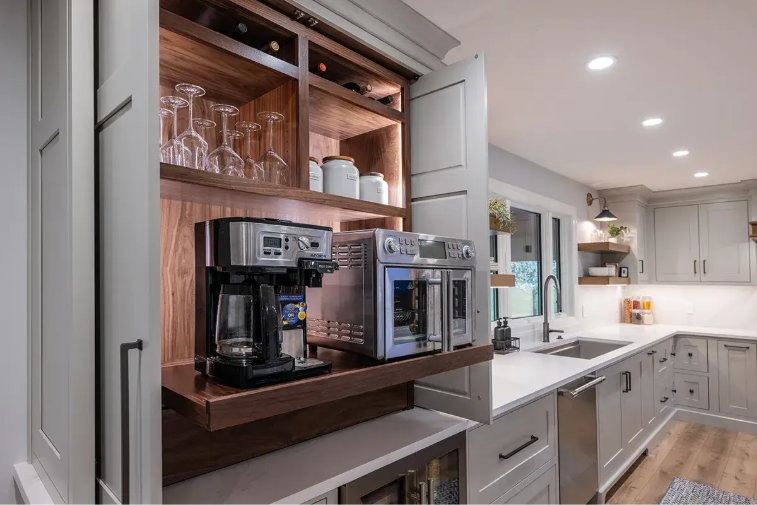
8. Personalized Design & Signature Details
The Trend:
The cookie-cutter kitchen is out. In 2026, design is all about personal expression—unique hardware, custom drawer inserts, coffee or wine stations, and curated displays.
Why It Works:
Spaces that reflect personal identity foster emotional connection and pride of ownership.
KDC Tip:
- Add a signature zone—like a coffee bar or open shelf for meaningful items.
- Mix metals or textures for a bespoke look.
- Let personality guide finishing touches, not just trends.
9. Artistic Surfaces & Bold Backsplashes
The Trend:
Kitchens are embracing dramatic stone veining, handmade tiles, and backlit glass panels for a refined but expressive look.
Why It Works:
The human brain craves novelty. A single bold visual element keeps the space stimulating without overwhelming it.
KDC Tip:
- Use statement materials in moderation for balance.
- Coordinate veining or color flow across backsplash and island surfaces.
- Combine bold art with calm cabinetry for harmony.
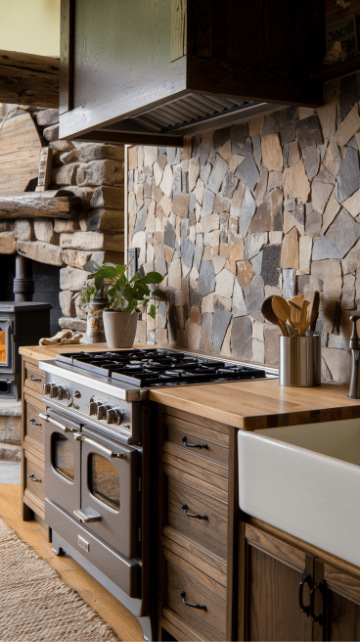

10. Wellness-Focused Kitchen Design
The Trend:
Designing for well-being is a growing priority. Natural light, ergonomic layouts, acoustic comfort, and air quality are shaping next-generation kitchen design.
Why It Works:
Environments affect energy and mood. A well-planned kitchen can quietly promote health, calm, and family connection.
KDC Tip:
- Position seating to capture daylight.
- Incorporate quiet-close drawers and sound-absorbing materials.
- Choose surfaces that are easy to clean and maintain for a stress-free routine.
Kitchens That Work, Feel, and Endure
The best kitchens of 2026 combine design, psychology, and technology to support everyday life. They balance innovation with human comfort—creating spaces that function beautifully, reflect individuality, and promote well-being.
At Kitchen Design Center, we bring design insight and behavioral science together to craft kitchens that fit the way you live.
Ready to start your project? Schedule a design consultation with our team today—our $250 design fee goes toward the cost of your remodel.
